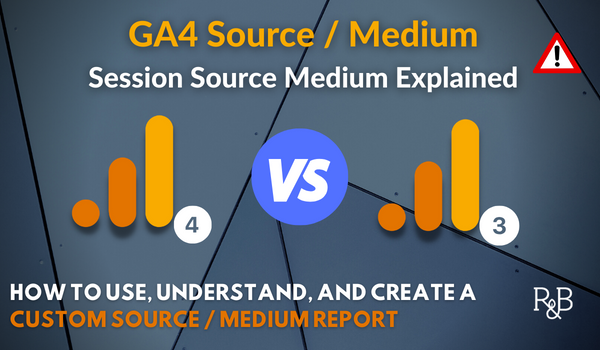Understanding Secondary Dimensions in Google Analytics: What is a Secondary Dimension and How It Boosts Data Analysis
Revealing the Impact of Second Measurement in Google Analytics on Data Evaluation and Insights
In the realm of information analytics, the use of secondary dimensions within Google Analytics has actually arised as an essential tool for removing much deeper insights and unraveling facility patterns that might or else remain covered. By peeling back the layers of primary data collections, secondary measurements supply a nuanced point of view that enriches the understanding of user actions, internet site performance, and the performance of advertising approaches. However, truth influence and untapped potential of secondary measurements are commonly ignored, eclipsed by the attraction of primary metrics. As we browse via the elaborate landscape of data evaluation, the significance of secondary measurements comes to be progressively evident, losing light on vital details that hold the trick to notified decision-making and calculated optimizations.
Checking Out the Principle of Additional Measurements
Secondary measurements in Google Analytics give extra insights by allowing customers to examine primary data in combination with a secondary feature. By incorporating additional measurements, individuals can dive deeper right into the data and discover beneficial connections that could otherwise go undetected - what is a secondary dimension in google analytics.
By discovering the different secondary dimensions offered in Google Analytics, customers can open brand-new understandings and enhance their electronic advertising initiatives. In significance, additional dimensions serve as a powerful tool for enhancing information evaluation and driving workable outcomes.
Enhancing Information Interpretation With Additional Dimensions
Having developed the fundamental understanding of additional dimensions in Google Analytics and their critical role in information evaluation, the focus now changes in the direction of leveraging these additional qualities to improve the interpretation of analytics information (what is a secondary dimension in google analytics). By integrating secondary measurements into information evaluation, analysts can obtain deeper understandings right into individual behavior, internet site efficiency, and advertising effectiveness

Additionally, additional measurements assist in contextualizing main data metrics by providing added layers of details. This contextualization help in comprehending the 'why' behind the information patterns, assisting analysts make educated optimizations and choices to enhance general performance. Eventually, including secondary measurements improves the information analysis procedure, leading to even more calculated actions and purposeful understandings.
Uncovering Hidden Insights With Second Dimensions
Discovering the depths of analytics information with secondary measurements reveals useful insights that would certainly or else stay covered. By integrating second dimensions in Google Analytics, services can unearth surprise patterns, fads, and relationships that give an even more comprehensive understanding of individual actions and site efficiency. These added layers of data enable experts to delve deeper right into the key dimensions, such as web traffic resources or touchdown pages, and acquire an extra nuanced perspective on exactly how various variables engage with each various other.
Through the use of second measurements, analysts can segment and contrast data throughout numerous dimensions, enabling them to recognize certain elements that influence customer interaction, conversion rates, and total success metrics. By combining the primary dimension of 'tool classification' with the secondary measurement of 'age team,' marketers can determine which age demographics favor accessing the web site with mobile devices versus desktop computers.
Leveraging Additional Dimensions for Actionable Analytics
Building upon the insights introduced with secondary measurements in Google Analytics, services can now harness this enriched information landscape to drive actionable analytics and critical decision-making. By leveraging additional measurements, organizations can dive deeper into their information to extract useful patterns, trends, and connections that may have previously gone undetected. This deeper degree of evaluation allows organizations to acquire an extra detailed understanding of customer behavior, campaign efficiency, and overall internet site effectiveness.
One key advantage of utilizing additional dimensions for workable analytics is the ability to sector information based on certain standards. This segmentation enables organizations to tailor their campaigns and techniques to different audience teams, bring about more targeted and efficient advertising and marketing initiatives - what is a secondary dimension in google analytics. Additionally, additional measurements supply an even more holistic view of user interactions, allowing organizations to maximize their website web content, design, and overall individual experience
Maximizing Decision-Making With Additional Measurements
To boost tactical decision-making in analytics, leveraging additional measurements in Google Analytics can offer a much more nuanced viewpoint on user habits and project performance. By integrating additional measurements right into data analysis, businesses can delve deeper into the specifics of their internet site visitors' communications and involvement patterns. This added layer of details enables an extra thorough understanding of just how various variables, such as demographics, gadgets, or traffic sources, influence vital efficiency signs.

Final Thought
Finally, using additional measurements in Google Analytics plays a crucial function in enhancing information evaluation and discovering surprise insights. By discovering this concept, one can obtain a deeper understanding of customer behavior and make notified choices based on workable analytics. Leveraging additional measurements permits a much more extensive analysis of data and takes full advantage of the effectiveness of decision-making processes.
